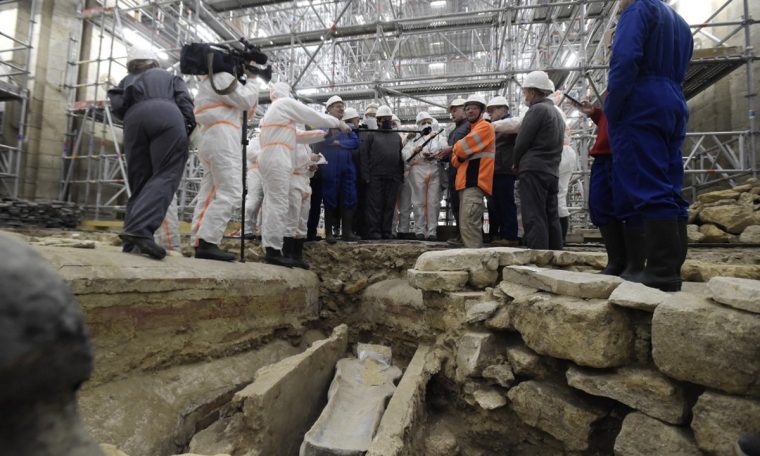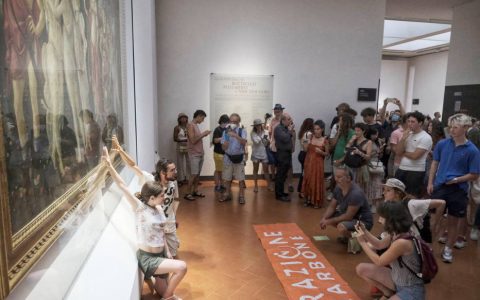
many graves and one lead sarcophagus : Notre-Dame de Paris undergoing reconstruction of the cathedral, has unearthed important archaeological remains that may date back to the 14th century.
The remains were found at the point where the central aisle of the cave meets the transept of the cathedral. no one knows who
On April 15, 2019, a fire broke out in Notre-Dame, which brought down the entire roof structure. As part of the reconstruction works, a massive scaffolding about 100 meters high is to be installed at this intersection to rebuild the tower.
To ensure the firmness of the soil, excavations were started at the site.
This work revealed an entire underground heating system, which has existed since the 19th century. The coffin was found in brick structures, whose lead appears to be deformed by the weight of the earth and stones.
The lead sarcophagus found in Notre-Dame de Paris dates back to the 14th century — Photo: Julien de Rosa/AFP
A few meters away, archaeologists are working hard to locate another valuable find: the remains of an ancient jube, or alto choir.
Jub was a stone choir, adorned carved figures, Which for centuries separated the choir from the rest of the church. Notre-Dame was built around 1230 and was destroyed in the early 18th century.
Experts explain that the Catholic Church has changed its method of worship over the centuries, and that the altar, which separated the faithful from office, has lost its meaning.
Archaeologists work in Notre-Dame — Photo: Julian de Rosa/AFP
As was common at that time, the stones were reused for the same purpose.
This Tuesday (15), a few centimeters from the surface, an archaeologist was slowly cleaning his carved and outstretched hands, as if begging.
In the plastic baskets, which had already been removed from the ground, there was a statue of a bearded man and carved vegetables, with traces of the paint with which they were made.
“The discovery of this coffin will allow us to better understand the funeral practices and rites of the Middle Ages,” explained Dominic García, president of the National Institute of Archaeological Research.
These are not the first human remains to be found at Notre-Dame, which has served as a cemetery since its construction, especially for those attributed to a temple or religious figures.
But they had never found a coffin so well preserved.
So far, archaeologists have managed to present a mini endoscopic camera inside the coffin. “You can see a pillow of cloth, hair and leaves on top of the head, a well-known phenomenon”, explains Christophe Besnier, the archaeologist responsible for the excavation.
“The fact that these plant elements are still found inside gives priority to a very good state of protection of the body”, said this expert.
Fire at Notre-Dame Cathedral in Paris — Photo: Rodrigo Sánchez/G1
The photo combination shows the Notre-Dame Cathedral before and after the fire in Paris – Photo: Philippe López / AFP; Thomas Samson/AFP
It is currently unknown who the body may have been, although the location suggests it was an important character, early in the life of a mythical temple.
“It is a great feeling, this cathedral represents the whole history of Paris, and it is extremely impressive to find yourself in front of these relics,” said Culture Minister Rosaline Bachelot at the foot of the coffin.



